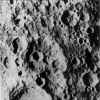Space program with the participation of employees
Research Department of the moon and planets of SAI MSU
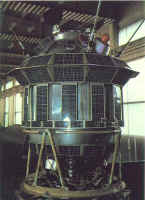
On the 7th October 1959, the first ever images of the far side of the Moon were received from the Luna-3 automatic interplanetary station. The photographic data, sent back to the Earth, were sent for examination to three astronomy institutions: the Main Astronomy Observatory (Pulkovo), the Astronomical Observatory of Kharkov University, and the Sternberg State Astronomical Institute (GAISh MGU). In Moscow, the Central Science-research Institute of Geodesy, Aerial photography and Cartography (TsNIIGA&K) soon joined the work.
It is generally recognised that the most revealing processing of the images was done jointly by collaborations of specialists from GAISh and TsNIIGA&K. The technique of preliminary disencoding and processing of the images was carried out by a team led by Yu. N. Lipsky.
On the basis of the data, the first map of the lunar far side was prepared, including hundreds of surface details apparent from their reflective characteristics. A full catalogue of theses structures was released in the Atlas of the Far Side of the Moon (1960). Soon after, GAISh and TsNIIGA&K jointly prepared the first lunar globe, covering 2/3 of the lunar hemisphere not visible from the Earth.
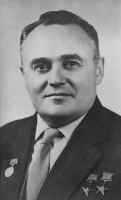
In studying the first space photographs of the Moon, a group of specialists gathered in the mid-60s to found the Department of the Physics of the Moon and Planets of GAISh, and on the initiative of the head constructor of space-rocket technology, Academic S. P. Korolev, its aim was set to be the research and processing of space photographs of the Moon and the preparation of lunar maps and globes. The head of the department and the supervisor of all its work was Yu. N. Lipsky.
The first associates of the Department of the Physics of the Moon and Planets were L. N. Bondarenko and K. I. Dekhtyareva. In 1964, on the request of S. P. Korolev, a graduate of MIIGA&K, V. V. Shevchenko was sent to the department, followed in 1965 by Zh. F. Rodionova and V. I. Chikmachev. These associates, and the associates of the Laboratory of Photometry and Spectroscopy, Yu. P. Pskovskii, M. M. Pospergelis and V. V. Novikov, were to be the core of the creative collective, which for many years under the guidance of Yu. N. Lipsky researched many different aspects of the lunar surface.
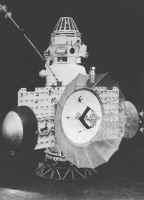
In mid-1965, after the near pass of the Zond-3 automatic interplanetary station and its new photography of the surface, the first stage of a global review of the lunar surface was completed. The images revealed many trends in the structure of the relief of both hemispheres of the Moon. The most significant was the demonstration of the asymmetry of the positioning of the maria features over the lunar surface. Previously unknown morphologies of relief were discovered. On the basis of all the available data from space and Earth-based observations of the lunar surface, GAISh and the Topogeodesic Service produced the first ever Complete Map of the Moon, and the first complete globe.
After the unexpected death of S. P. Korolev (1966), Yu. N. Lipsky and his team of lunar researchers lost their support from the leading space organisations of the country, since the new leadership of the Constructors' Bureau (CB) had no interest in fundamental research of the Moon.
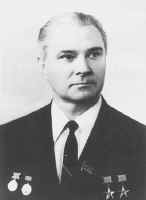
At this difficult moment for scientists, the Head Constructor of rocket engines, V. P. Glushko, came to their aid. Thanks to his active cooperation, work on the second part of the Atlas of the Far Side of the Moon was successfully completed, and the Complete Map of the Moon and complete globe (1967) were released. With the cooperation of V. P Glushko, special spherical screens with high-precision surfaces were prepared for the projection of a measurement complex. These unique photogrametric devices were used for cartographic processing of data from both the Moon and Mars.
Over the last 13 years, in cooperation with other specialist organisations, seven different lunar maps have been prepared and published; five editions of the lunar globe, and a three-volume edition of the Atlas of the Far Side of the Moon.
These work have firmly ensured the place of Soviet science in the global cartography of the Moon. An special confirmation of this is the written request from the leader of the Apollo programme V. von Brown, sent on the eve of the first piloted flight to the Moon, for the map we prepared.
GAISh became the leading astronomical institute of the country in the field of lunar research. By a decision of the Astronomy Council of the Academy of Sciences, GAISh MGU was awarded the coordinating role for the lunar research (1972).
At this time the Department of the Physics of the Moon and Planets was working with the CB, led by G. N. Babakinym. Yu. N. Lipsky and V. V. Shevchenko developed a photometric experiment, realised on the Lunokhod-2 rover, which normalised the images on the basis of an external standard (1973). The results of this work allowed the study of the photometric characteristics of the thin fraction soil in its natural location.
Under the supervision of M. M. Pospergelis, and later V. V. Novikova, with the assistance of A. P. Popov, S. I Ivanov and others, over several years natural Earth analogues of lunar and Martian landscapes were studied for field tests of automatic self-propelling rovers (lunokhods and marsokhods - moon and mars rovers). For this purpose, several expeditions were made, together with the planetokhod constructors, to the volcanic regions of the Kamchatka peninsula.
After V. P. Glushko was made Director and General Constructor of the Energy Science-Production Union (1974) the department's collective became included in a many-year task to design habitable bases on the Moon and Mars. This direction of research, put to the Department of the Physics of the Moon and Planets of GAISh was entitled "A detailed description of selected regions for bases." The work began in 1976 and continued uninterrupted until the early 90s.
A complex programme of lunar research was developed in the department which included research of the physical surface, the relief, and the crustal material of the Moon according to the results of Earth and space photographs. The methods of selenodesy, cartometry and morphometry, and planetary astrophysics were all employed. The fundamentals of this programme were devised back in the second half of the 60s as the principles of physical cartography by Yu. N. Lipsky and V. V. Shevchenko and later published in a series of works. In later development, these ideas became the basis of physical selenography. The most significant results were generalised in the monograph by V. V. Shevchenko Sovremennaya Selenografiya (Contemporary Selenography) (Nauka, 1980).
Data from Earth-based photometry of the Moon in combination with results of photometric processing of remote imaging allowed V. V. Shevchenko to obtain the magnitudes of the basic photometric constants of the Moon. The magnitude of the opposition effect (the increase of brightness close to zero phase) was used in obtaining these constants, measured in real conditions of true full Moon from space photographs. For the first time, a spatial scattering index was constructed, a numerical model of the mean photometric function of the lunar top-surface. This research was later generalised in the book Luna i ee nablyudenie (The Moon and observations of it) (Nauka, 1983).
At the end of the 70s, the first stage of research of the comparative morphology of the surfaces of the Moon, Mercury and Mars was completed. Yu. N. Lipsky, Zh. F. Rodionova, T. P. Skoboleva, K. I. Dekhtyareva and others together with colleagues from the Geological Institute of the Academy of Sciences carried out a complex of studies of the distribution of craters of different sizes on the surfaces of these bodies. The catalogues produced included more than 50,000 structures. The atlas of crater density distributions on the three bodies was made of around 40 maps. The statistical analysis of these data established the basic trends in the distributions of ring structures over 10 km in diameter.
After the death of Yu. N. Lipsky (1978) V. V. Shevchenko took over heading the department. The department's sphere of research continually widened, becoming known as the Department of Lunar and Planetary Research in 1978.
In honour of Yu. N. Lipsky, who laid the foundations of the contemporary research of the Moon in GAISh and led the work for many years, a crater in the very centre of the far side of the Moon was given his name.
In 1978, by a decision of the executive committee of the International Astronomical Union, V. V. Shevchenko was made chairman of the thematical group on lunar nomenclature and a member of the IAU working group on the nomenclature of planetary systems.
To mark the 25th anniversary of the start of lunar research from space, the department carried out a review of current research. A collection of papers, Problemy kompleksnogo issledovaniya Luny (Problems of lunar research) (MGU, 1986), was published.
In the 80s, the department intensively developed the laboratory and field research of analogues of the top-surface of the terrestrial moons and planets. V. V. Novikov, A. P Popov, M. V. Goryachev, S. I. Ivanov and others developed a method of remote evaluation of the mineralogical composition and physico-mechanical properties of rocks using telescopic spectral and polarisation observations of the Moon and analogous aerological and laboratory studies of Earth rocks. The field research was carried out in regions of volcanic covering on the Kamchatka peninsula. Regular observations were made on the Zeiss-600 high-mountain middle-Asia expedition of GAISh (near the town of Maidanak). In only the first two years of observations, more than 200 photographs were obtained.
Using a unifying multiplexer with a spherical screen, V. I. Chikmachev constructed a phototriangulation grid over the region of the far side of the Moon, from the large-scale trajectorial images sent back from the Zond-3 interplanetary station (1986).
V. A. Nikonov further perfected the global bearing selenodesic grid on the basis of several catalogues of coordinates, generated from high-precision Earth and space measurements (1986).
A. N. Sanovich together with G. A. Leikinym developed a model for the formation of multi-ring basins on the surfaces of planets and moons, which showed that their formation is connected with the acceleration of compression waves with depth, which naturally, in the presence of a crust, are covered by a regolith layer.
S. G. Pugacheva carried out a statistical analysis of the heat radiation of the lunar surface using Earth-based telescopic photographs. Later development of this work yielded a catalogue of the brightness and heat characteristics of 750 regions of the lunar surface and a map of heat anomalies. The results were published in the monograph Yarkostnye kharakteristiki infrakrasnogo i vidimogo izlucheniya lunnoi poverkhnosti (The brightness characteristics of the infra-red and visible radiation of the lunar surface) (MGU, 1989), prepared jointly with K. I. Dekhtyareva and V. V. Shevchenko.
Zh. F. Rodionova together with T. P. Skobeleva, K. I. Dekhtyareva, and others completed a colossal task in producing a wholly new type of catalogue of lunar craters. The Morfologicheskii katalog kraterov Luny (Morphological catalogue of the craters of the Moon) (MGU, 1987) for a long time had no analogues abroad. For the 15,000 lunar craters greater than 10 km in diameter, nine parameters were recorded describing the crater and the surface around it. This catalogue still remains a valuable source of material for various analyses of the crater population of the Moon in this range of sizes. Later, in 1994, Zh. F. Rodionova completed work on an analogous catalogue of ring structures of Mars. The morphological catalogue of Martian craters details 19,300 structures.
In the second half of the 80s work began on the development of methods for remote estimation of extra-terrestrial resources. This task was initiated by contract with the organisation NPO Energiya in choosing a location for a long-term lunar base (1982-86). A contemporary review of the world level of analogous research was made in the publication Lunnaya baza - proekt XXI veka (Lunar base - a project for the XXIst century) (VINITI, 1989) by V. V. Shevchenko and V. I. Chikmachev. A detailed development of this theme was done by V. V. Shevchenko. Recognition of the high level of these developments was made by the invitation of V. V. Shevchenko as one of two plenary speakers to the NASA symposium "Lunar bases and space activity in the 21st Century", in April 1988, Houston, Texas, USA. The organisers of the symposium entitled the presentation "The Soviet view of a lunar base". The other speaker was K. Sullivan, the official representative of NASA, astronaut, and at that time, member of the National Space Commission. The text of V. V. Shevchenko's presentation was published in several american journals.
In February 1991 a conference organised by the Department of Lunar and Planetary Research, "Scientific problems in creating a lunar base" was held in GAISh. Results from previously secret scientific and project developments on the practical exploitation of the Moon and the construction of lunar bases using Soviet rocket systems were presented for the first time. The scientific aspects of a long-term inhabited base discussed included the forecasting and detection of extra-terrestrial natural resources using remote methods of planetary astrophysics. V. V. Shevchenko, Zh. F. Rodionova, V. V. Novikov, V. I. Chikmachev, S. G. Pugacheva, A. N. Sanovich, V. V. Busarev, T. P. Skobeleva and K. I. Dekhtyareva all gave presentations on different aspects of this field. A collection of papers proceeding from the conference were published as Astronomicheskie aspekty osvoeniya Luny i poisk vnezemnykh resursov (Astronomical aspects of the exploitation of the Moon and the search for extra-terrestrial resources) (MGU, 1993).
The further development of the research on lunar exploitation and lunar bases won a series of contracts from 1994-98 and contributed to international projects, one of which was involvement in some special publications from the Journal of the British Interplanetary Society dedicated to Man and the Moon (1995).
From 1992-1996 V. V. Shevchenko advanced the hypothesis of an intense comet shower in the inner Solar System 10 million years ago, the traces of which are the diffuse structures on the Moon. Further development of these ideas came after the discovery of polar ice emplacements on the Moon. V. V. Shevchenko, together with A. A. Berezhnoi have shown the possibility of a cometary origin for the ices in a series of publications (1997-1998).
In June 1994 V. I. Chikmachev and S. I. Ivanov carried out observations of a unique event on the AZT-22 telescope at the Maidanak Observatory - the appearance of impact structures in the atmosphere of Jupiter as a result of the collision of fragments of the disintegrated comet nucleus Schumaker-Levy 9. Analysis of the images enabled the reconstruction of the spatial structure of the impact ejecta in the regions where the largest fragments fell.
In 1997 V. I. Chikmachev and S. I. Ivanov observed the comet Hale-Bopp close to the moment of perihelion using the GAISh AZT-2 telescope.
The implementation of the international Russian-French project to carry out spectral observations of the Moon began in 1990. After successful joint observations on the 2-m Lio Telescope at the Pic-du-Midi Observatory (France) an agreement of scientific cooperation was made between the P. Sabbatier University in Toulouse, France, and the Sternberg State Astronomical Institute of Moscow University. On the French side, P. Pinet became the project leader; on the Russian side, V. V. Shevchenko. In 1995, the agreement was extended to cover the theme "High-resolution multispectral cartography of structures on the lunar surface". To date, a series of extremely interesting studies of the diffuse structures on the Moon have been carried out, using both Earth-based and remote (Clementine) spectral images.
